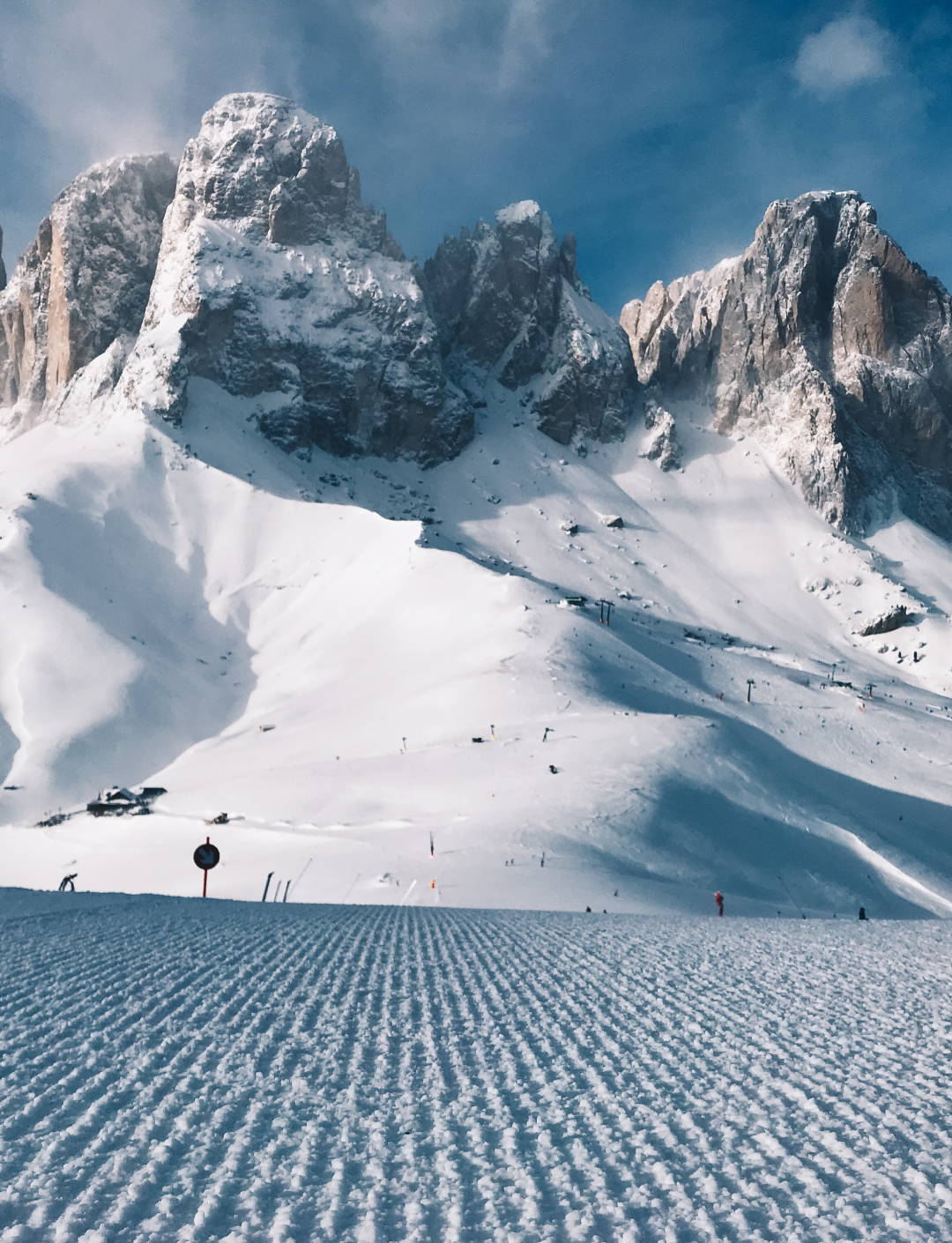
Prevention is Key
As with most physical activities, prevention goes a long way. Make good life decisions before you hit the slopes. This includes not heading out when you're overly tired, sick, intoxicated, or hungover. Although having an adult drink with friends or family back at the lodge is synonymous with many a ski vacation, it's best to wait until you're done skiing for the day and then in moderation if you plan on heading out again in the morning. On that same note, when you're under the weather, your body is not functioning to its fullest capacity, and it's best to sit the day out. The mountains aren't going anywhere.Don't Push Your Limits
One of the easiest ways to avoid falling? Stay on slopes rated for your skill level. One of the leading causes of ski-related injuries happens on terrain you're not ready for. The more you practice your technique and balance on runs within your skill level, the sooner you'll progress to more difficult terrain. We've all seen that skier trying to do “pizza” turns down black diamond moguls…it never ends well. Remember, green circles mean easy terrain, blue squares mean moderate terrain, and black diamonds mean advanced terrain. Survey a terrain map before setting out for the day and pay attention to the signs out on the slopes. Make sure you know where a lift is taking you before you hop on. When in doubt, ask the ski lift attendant.Full Body Care
If you've never skied before, the best way to learn correct technique is in a lesson with a qualified instructor. Don't go out on your own and try to ‘wing it'. This attitude could result in an injury to yourself or someone around you. Even if you don't train ski-specific muscles before you hit the slopes, it's recommended to be in decent physical shape, as skiing is an aerobic exercise. Being in good cardiovascular shape is also helpful, as you will be able to stay on the mountain longer. If you are interested in learning how to train ski-specific muscles, here are some tips. When you're out on the slopes, it's important to remember your body still needs care. Bring a small backpack with a water bottle and a snack so that you're sure to stay hydrated and maintain your energy levels. These tips will help you avoid taking that dreaded plunge down the mountain. Be sure to warm up and stretch after you ski, not before. While your muscles are still warm, perform some back, quadricep, and buttocks stretches to ensure your muscles don't tighten up that night and make it too painful to ski the next day.Safety
Despite our best efforts, falls still happen. An icy patch might send you flying or swerving to avoid someone in front of you might throw your balance off. This is why it's important to wear a helmet and goggles while you're skiing. Safety equipment is relatively new to the snow sports realm, but in recent years has become quite trendy. Check out some of the best helmets of the year. Be sure to be honest about your skill level when you rent your gear, or if you own your own, don't crank the bindings too tight. One of the leading causes of injuries is a result of falling and your skis not popping off, resulting in unnatural and possibly devastating leg rotations. When a rental attendant or you make your bindings too tight, it reduces the possibility of your skis popping off. It's better for your skis to pop off on a small fall than stay on during a massive wipeout that sends you splayed spread-eagle down the mountain. If you're susceptible to knee or wrist injuries, wearing a brace could be helpful, as well. If you feel like you're starting to go too fast and you might lose control, stop before you fall. Be sure to stop in a safe place and not in a skier's blind spot.

Fall into the Fall
If you feel yourself start to fall, you can take measures to ensure your fall doesn't result in an injury. Practice the skier code of conduct when it comes to other skiers on the slopes. Be sure you are capable of maneuvering around slower skiers, stopping, and getting on and off the lift. If these skills are not up to par, you should take a lesson or refresher session first. When you begin to fall, lean into the mountain, as opposed to down the hill, as this will help keep you from tumbling. Let go of your poles and let them dangle from your wrists and try to embrace the fall, rather than brace your body in panic. Falls in the snow are typically soft and as long as your skis pop off, you should be able to safely come onto the ground. Once you've come to a stop, then you can start working your way towards any misplaced gear. Fortunately, most skiers won't hesitate to help by bringing your skis or poles down to you. If you're capable and in a good spot, it's good practice to do the same for others. Everyone falls at some point — but you can definitely take steps to ensure a fall won't be the end of your day on the mountain.





